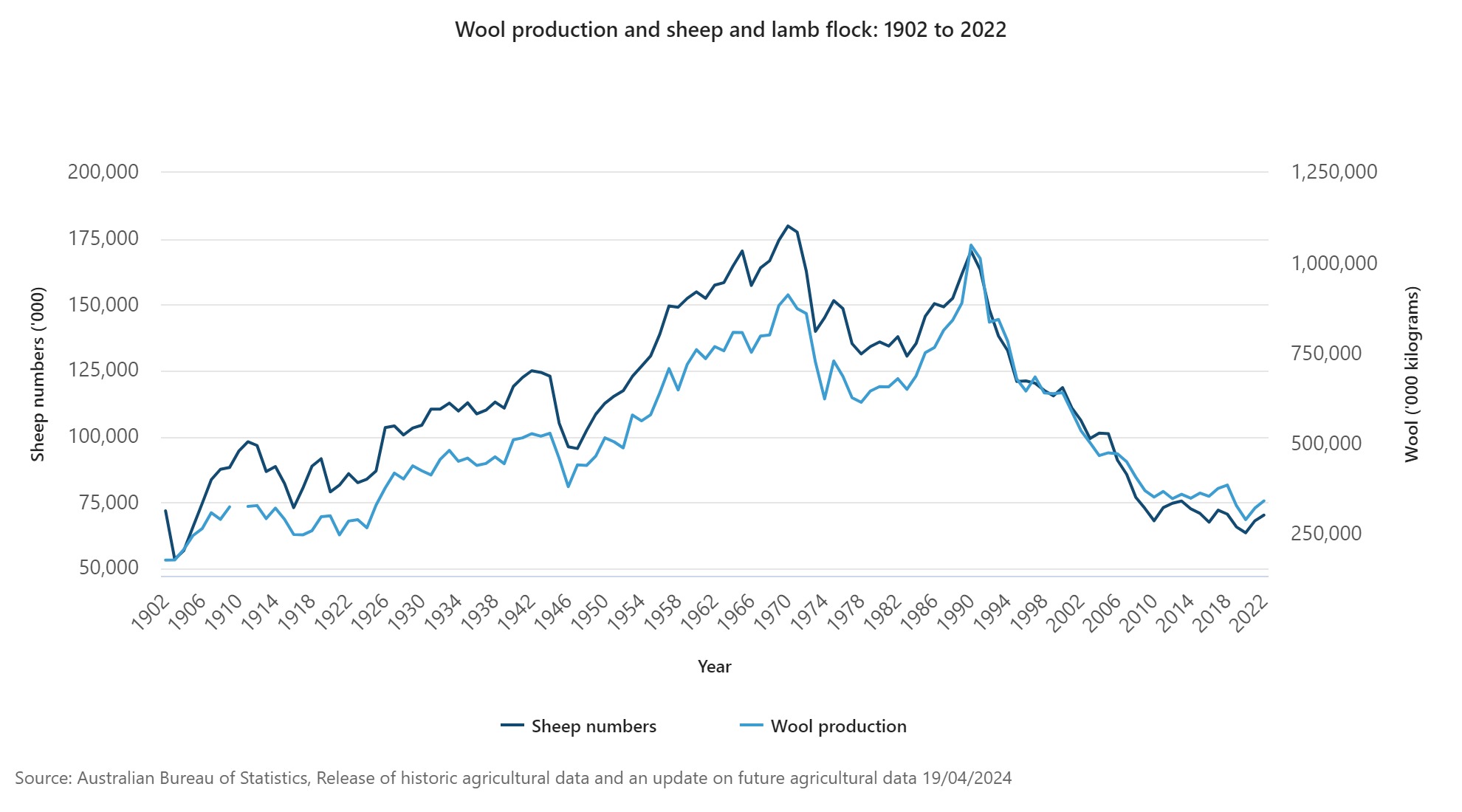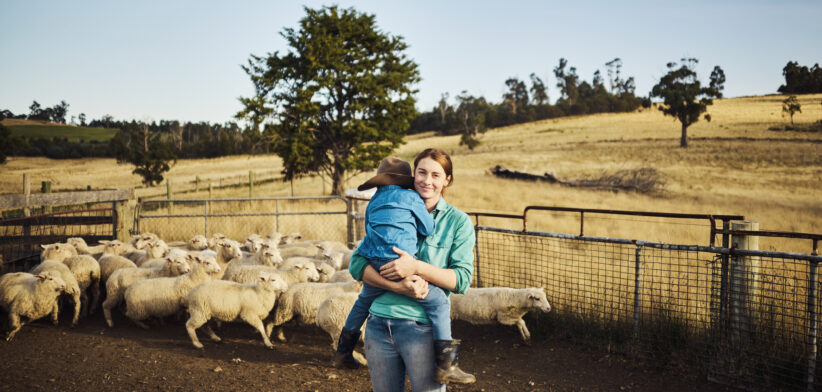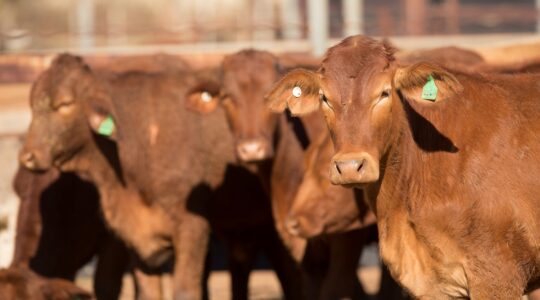Much of Australia’s early economic success came from the wool industry – a nation “riding on the sheep’s back”.
That was then.
New longitudinal research just released by the Australian Bureau of Statistics, paints a picture of a significant trend decline in the national sheep flocks since the peaks in the 1960s and 1970s.
In 2022, the flock had fallen to 70.24 million, almost identical to the numbers recorded when the data was first collected in 1902 and well under the 180 million peak in 1970.
The sheep numbers do not fully correlate with wool production that peaked at over one billion kilograms in 1990 and now sits at 342 million.
The ABS said the decline was due to a variety of factors.
“The increasing use of synthetic fibres, a global over-supply of wool and the 1991 collapse of the Reserve Price Scheme, resulted in wool prices plummeting to $3 a kilogram in 1992-93 (equivalent to around $6 per kilogram in 2021-22),” it said.
“After a slight recovery from the economic issues, the Millennium drought saw sheep numbers drop again, from 120 million in 1997 to 68 million in 2010.
“After a brief period of better seasonal conditions, another drought between 2017 to 2019 resulted in Australia’s wool production dropping to its lowest level since 1923.
“In 2019-20 only 290 million kilograms were sold, and the sheep flock dropped to 63.5 million, the smallest flock since 1904.”
The Bureau said Australia’s early wool success was due to Merino sheep excelling in the conditions here, combined with the British Government’s need for a reliable wool supply during the Napoleonic wars.
The wool industry analysis is part of a broader review of 150 years of farming data ahead of the first release of new data sources and methods in June.
Australian Statistician David Gruen said that the ABS had collected data directly from farmers for more than a century.
“Historical data show Australia’s wheat production growing from five tonnes in 1789 to 279,000 tonnes in 1861, to a historic record of 36 million tonnes in 2022,” he said.
“This data offers extraordinary insights into our country’s farming history, ranging from the 1876 invention of the stump-jump plough and its role in dramatically increasing wheat production, to the fortunate timing of Australia’s first commercial fleece shipment to England to meet wool demand during the Napoleonic wars in Europe.”
More details are on the ABS website.









